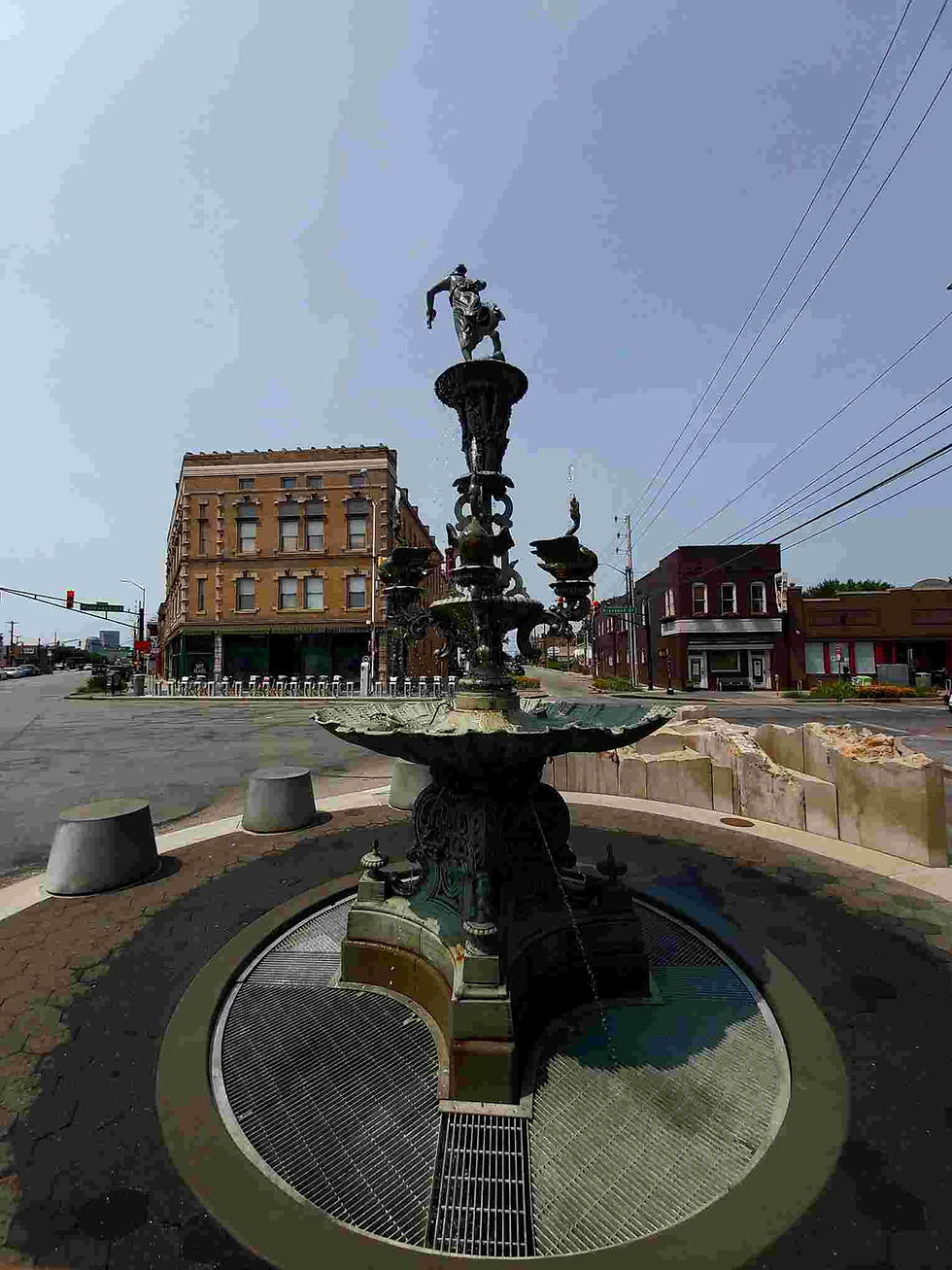Diamond Jubilee: Madison, Indiana
- Matthew P G

- Nov 22
- 4 min read
the best little town that wasn't
AQ agreed to continue the trip to Indianapolis from Louisville. Since we were not in a hurry (and we were oblivious to time - as happens on a long trip), we decided to make a few stops along the way. After all, without traffic it was only a two and a half hour drive to Indy.
I found the little town of Madison, Indiana online. Everything written about it waxed lyrical - I felt like I was reading about Milford, PA in a New York Times "Weekender" article. Residents of Louisville, Cincinnati, and Indianapolis went there in droves for the weekend. It was a short drive up the Ohio River valley (on the Kentucky side). In the early morning of July 3rd we set off. The drive along the river was pleasant, mostly through farmland with occasional views of the water
We arrived to a city that appeared nearly empty, but with many strange parking restrictions in place (temporary). We had no idea what was going on, so we had a walkabout.
Madison was laid out and platted in 1810, and the first lots were sold in 1811 by John Paul. It had busy early years due to heavy river traffic and its position as an entry point into the Indiana Territory along the historic Old Michigan Road. Madison's location across the Ohio River from Kentucky, a slave state, made it an important location on the Underground Railroad, which worked to free fugitive slaves. George DeBaptiste's barbershop in town became a nerve center of the local group. By 1850, Madison was the third-largest city in Indiana (after New Albany and Indianapolis), and among the 100 largest cities in the U.S.
Indiana's first railroad, the Madison & Indianapolis Railroad, was built there from 1836 to 1847.
...
Madison's days as a leading Indiana city were numbered, however, when river traffic declined and new railroads built between Louisville, Indianapolis, and Cincinnati tapped into Madison's trade network. As a result, Madison's growth did not continue at the same pace it had experienced before the Civil War. During the late nineteenth century, many new buildings were still being built, but in many cases older structures were modernized by adding cast-iron storefronts and ornamental sheet metal cornices. Some earlier buildings survived without major alterations, and the Madison National Landmark Historic District today contains examples of all the major architectural styles of the nineteenth and early twentieth centuries, from Federal to Art Moderne.
(Wikipedia)
The little downtown and main street were iconic. We hadn't seen anything similar since Marietta - but it was dead. Not closed, just dead.






As we made our way down to the river, we noted all the streets were cordoned off. Completely confused, we finally came to the "entrance" to the riverfront (not the main part of town - that was back on the street we had just walked). Beyond the barricade were throngs of people lining the river.
Unwittingly we had arrived for the Madison Regatta Weekend.
Madison has a powerboat racing tradition dating back to at least 1911. In 1929, the city began holding an annual race, later called the Madison Regatta beginning in 1948. Since 1954, the Madison Regatta has held a high points Unlimited hydroplane race annually in early July. Although Madison has a population of only 12,000, the regatta maintains its place in Unlimited Hydroplane racing, hosting an H1 Unlimited race, whose other events are in Seattle, San Diego, Guntersville, Alabama, and Tri-Cities, Washington. The Madison Regatta draws about 70,000–100,000 people annually on the July 4 weekend. A week-long riverfront festival also surrounds this racing event.
(Wikipedia)
Even during the lull in COVID, the place was packed. Likely everyone was sick of being stuck inside and wanted a chance to attend some special event. Since the race was outdoors, it was "safer" than most similar activities. People showed up in RVs or camped. We had stumbled upon an unique piece of Americana of which I knew nothing. And, it appeared to be very American: hydroplane racing at unlimited speed along a straight stretch of the Ohio River. The event was nationally famous for devotees and regionally famous for locals.
A and I only wanted to walk down to the riverfront and have a look. Well, sorry, that would cost us $50 to enter the racing zone. We were astounded (and I was more than a little pissed off).
We continued through town trying to find another way to access the river if only to take a few photos, but everything was completely sealed off. Eventually we made it to the bridge where we had entered Madison from Kentucky and walked out to have a look.


July 2021
The view wasn't great but it would have to do. It was clear why this part of the Ohio River was selected - it was a very long, straight stretch. Our bad luck was visiting such a lovely little town on the one day of the year it closed down and focused on the river (and high speed boats).
We decided to move on to Madison's more permanent (and accessible) famous spot - Clifty Falls State Park.



Comments